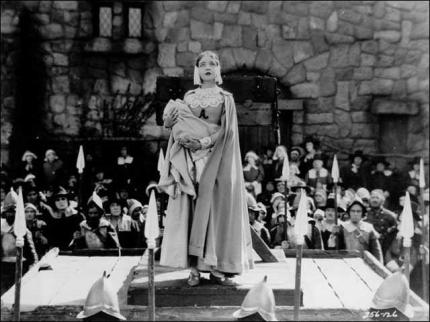
After deciding to go to England and live as a family (Arthur, Hester, and Pearl) there, Hester takes off the scarlet letter, to show that she is no longer bound by it. Then, in chapter 18, we see Hester and Arthur talking in the forest. Throughout the book, we see that the sun shines on Pearl quite often, but never on Hester. Its importance becomes more evident as the book comes to a close, but the earlier parts of the book are used to build up its significance. It represents the sin of the person standing upon it and it shows the Puritan way of dealing with sin.Īmong the other symbols we see in the book is the sun and its shining. The scaffold, like the scarlet letter, to the Puritans, is a place of public shame for those persons who decide to break the Puritan Law. The very ideal of ignominy was embodied and made manifest in this contrivance of wood and iron.” These few sentences pretty much sum up the significance of the scaffold in the story. In the second chapter, Hawthorne writes, “ It was, in short, the platform of the pillory and above it rose the framework of that instrument of discipline, so fashioned as to confine the human head in its tight grasp, and thus hold it up to the public gaze. Another one we see early in the novel, at about the same time we see Hester wearing the scarlet letter for the first time in public, is the scaffold on which she stands after walking out of the prison. The scarlet letter is only one of the symbols representing Hester’s shame and punishment.


Regardless, the true duty was to punish and teach a lesson, neither of which the letter performed successfully.

It means different things to different people – a sign of wealth to the butler, curiosity for Pearl, guilt for Dimmesdale, rebelliousness, revenge or motivation for Chillingworth, and betrayal of one’s spouse, to name a few. Throughout the book, there are various meanings to the scarlet letter. If she had learned anything from the letter, she would have known better than to run away with a man who wasn’t her husband. Hester plans to skip town and go back to Europe with Dimmesdale. Then, in chapter 18, Hawthorne writes, “ Thus, we seem to see that, as regarded Hester Prynne, the whole seven years of outlaw and ignominy had been little other than a preparation for this very hour.” Although the scarlet letter does bring shame to Hester, as Hawthorne writes, it has not performed its duty. Rather than bringing torture to Hester, it eventually becomes a symbol to some people meaning “able.” In chapter 13, Hawthorne writes, “ They said that it meant ‘Able’ so strong was Hester Prynne, with a woman’s strength.” A few pages later, Hawthorne writes, “ The scarlet letter had not done its office.” The scarlet letter was meant as a punishment for Hester, and yet here we see that it hasn’t punished Hester. In chapter five, Hawthorne writes, “…Hester Prynne had always this dreadful agony in feeling a human eye upon the token the spot never grew callous it seemed, on the contrary, to grow more sensitive with daily torture.” As the story unfolds, though, this letter comes to mean other things to Hester and the people.

During the first few years of Hester’s punishment, the letter was a daily reminder of shame. In the second chapter, Hester walks out of the prison, wearing the infamous scarlet letter ‘A’. To begin with, the most important and influential symbol in the entire book is the infamous scarlet letter, hence the title, The Scarlet Letter. Three other symbols are the scaffold, the sun, and the forest. The most obvious and well known, as it is in the title, is the scarlet letter Hester is forced to wear. Throughout the novel, The Scarlet Letter, the author, Nathaniel Hawthorne uses a few key symbols to represent major themes in the book.


 0 kommentar(er)
0 kommentar(er)
